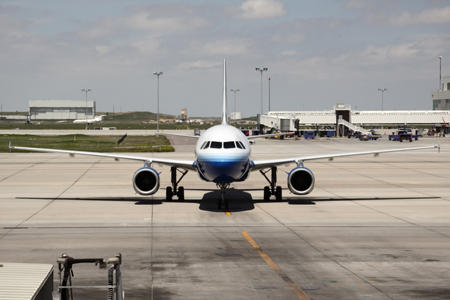 Under competitive pressure more and more airlines are abandoning the strategy of holding huge and expensive parts stocks to support their operations. However, it does not mean that they are willing to give up on the extremely reliable dispatch such stocks support. As a result, finding the right balance between spares availability for fleet utilization and the high cost of maintaining stock levels still remains one of the biggest challenges for an airline today.
Under competitive pressure more and more airlines are abandoning the strategy of holding huge and expensive parts stocks to support their operations. However, it does not mean that they are willing to give up on the extremely reliable dispatch such stocks support. As a result, finding the right balance between spares availability for fleet utilization and the high cost of maintaining stock levels still remains one of the biggest challenges for an airline today.
All carriers share the need to ensure that spares are in the right place and at the right time. Efficient supply chain management requires sophisticated forecasting, well-placed stocks and smart logistics. While there are airlines that can perform some of these tasks, most still lack the scale to forecast part requirements precisely, ending up having to pay impressive amounts of money for excess inventory.
Nowadays, more and more OEMs offer spare parts support for their products on a flight hour basis and push the service to their clients rather aggressively. For instance, with around 11 000 of its engines in operation, Pratt & Whitney has up to 40% of PW4000s and 60% of V2500s under flight-hour support. It is estimated that 80% of GTFs are similarly covered. The company stocks 20 000 new part numbers and 25 000 numbers of surplus parts, and commits to fulfilling orders promptly 95% of the time.
Nevertheless, engine support is only part of the picture. For instance, up until recently most operators used to hold largest parts stocks at their main bases, with only a set of the most commonly required spares stored at outstations for line maintenance and A-checks. However, considering the latest trends in the industry it is of no surprise that the focus has strongly shifted towards the support for out-of-base services. After all, especially as concerns long-haul operations, aircraft downtime can be greater at an airport than at the main base. That is why the stocks kept in these locations needs to be carefully tailored to every particular operator’s requirements, rather than consist of speculatively placed spares in anticipation of demand. Moreover, while there is the predictability of planned and forecasted maintenance, the unpredictability of defects and non-routine maintenance is a whole other challenge.
used to hold largest parts stocks at their main bases, with only a set of the most commonly required spares stored at outstations for line maintenance and A-checks. However, considering the latest trends in the industry it is of no surprise that the focus has strongly shifted towards the support for out-of-base services. After all, especially as concerns long-haul operations, aircraft downtime can be greater at an airport than at the main base. That is why the stocks kept in these locations needs to be carefully tailored to every particular operator’s requirements, rather than consist of speculatively placed spares in anticipation of demand. Moreover, while there is the predictability of planned and forecasted maintenance, the unpredictability of defects and non-routine maintenance is a whole other challenge.
According to Zilvinas Sadauskas, the CEO of Locatory.com, the airline industry still has a lot to learn about massive improvements that are made possible for inventory management with some relatively simple software changes: “Making it all work starts with forecasting and IT. If you don’t have a good information system, you will be dead in a few months, since you will simply lose track of stuff.”
Appropriate application of such tools enables carriers to avoid delays caused by the lack of materials whilst cropping gross part stocks by 10%, the executive states. As a result, one gains the ability to provide a better service level for parts and more reliability for maintenance operations. Moreover, network suppliers can enjoy significant improvement in their business performance, not to mention the fact that direct costs for fleets of 10-15 aircraft can be cut by 20-25%. However, all these great perks are subject to at least a few years’ worth of operational data. At the same time, some airlines are reluctant to give access to their data needed in order to outsource contractors, or, alternatively, supply it in formats that are unusable.
“If industry players are seeking to significantly cut the currently excessive supply chain-related costs, closer collaboration between OEMs and suppliers must be accompanied by the overall increased openness and trust. There is also the need to challenge the existing status quo surrounding manufacturing processes and productivity, including program management and engineering productivity. The question is whether the industry is finally ready to apply the kind of focus and strategic thinking needed to achieve what it means to be truly competitive: profitable growth,” says Zilvinas Sadauskas, the CEO of Locatory.com.





